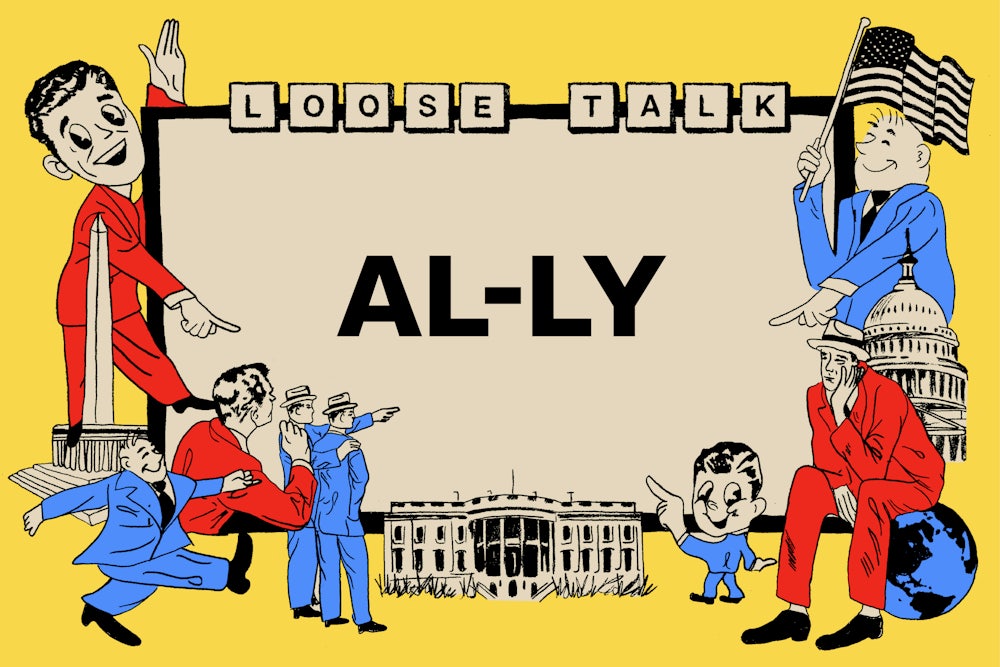In the September 1970 issue of the radical feminist magazine off our backs, an anonymous author asked, “Who are our real allies in a revolutionary struggle?” Half a century later, a writer posed a similar question in Marie Claire: “How Can I Become a Better Ally?”
That subtle shift in rhetoric, from “allies” to “ally,” has made a difference. Typically, “allies” are organizations, armies, or nations united in a struggle against a common enemy. But “ally” now has a second, distinctly modern meaning in the Oxford English Dictionary, as someone who “supports the rights of a marginalized group … without being a member of it.” Rather than joining a coalition among groups of allies, the modern ally is devoted to improving both themselves and, by extension, the community around them. “Allyship” is a personal choice and a character trait.
In the places where the language of allyship circulates—among activists, on social media, and in universities and workplaces—it is often presented as a skill to be mastered. On a web page titled “How to be a white ally,” Imperial College London urges students and faculty to “listen” to their Black friends and to Black activists who post on social media. And a 2014 article, “How to be a better ally,” counseled readers to “lift up marginalized voices, not to usurp them.”
There’s nothing inherently wrong with encouraging listening, empathy, and humility—but these are also entry-level social skills. Shouldn’t we demand more of people who aspire to participate in a political struggle? Many critics of the allyship model have described it as performative and therapeutic, a self-righteous theater of “well-meaning white people” who want to talk about problems without doing much else. In The White Ally Toolkit Workbook, the consultant David Campt, a self-described “coach and thought leader of effective dialogue strategies,” responds to those criticisms by saying that direct conversation among white people can move white public opinion on racism in America. As Campt puts it, white people need to talk to “Cousin Hannah or Uncle Tristan,” confronting them about their racial biases.
There is an organizing model here—squint and you might see the outline of Stokely Carmichael in 1966, telling students at Berkeley to “go into white communities and start organizing them.” But while a conversation is the starting point of any organizing campaign, the instructional model of allyship often seems to regard conversations as the objective. It’s an understanding of politics as discourse about politics. Hence the emphasis, in all the guides instructing people on how to be better allies, on sound and gesture: listening, empathy, signal boosts, voices.
There is nothing new, or necessarily suspicious, about the idea of aligning oneself with an identity you don’t directly share, of course. White abolitionists in the 1850s, homemakers who refused to buy grapes in the 1960s, Teamsters who won’t cross picket lines now—they were and are all someone else’s allies. But it’s what they’re doing that counts. And if an “ally” is something you are, only an older word, like solidarity, can describe something you do.




